During 2010, I was lucky enough to be able to visit three world class armor museums.
While on family vacation to England and France last June, I was able to visit The Tank Museum in Bovington, UK and the Musee des Blindes in Saumur, France. On an October business trip to the San Francisco Bay Area, I took some extra time to visit the Military Vehicle Technology Foundation (MVTF) (better known as the Jacques Littlefield collection) in Portola Valley, California.
There are four things I hope to accomplish with this article.
- Share my experience visiting each of the three museums.
- Provide a representative sampling of photos from the three facilities.
- Supply information that may be helpful to others planning visits of their own.
- Inspire readers to take their own virtual tours using the URLs provided.
The Tank Museum
Web: http://www.tankmuseum.org
The Tank Museum is the museum of the Royal Armored Corps. and Royal Tank Regiment. It is housed in a 50,000′ sq. exhibit hall located in Bovington Camp in Dorset in South West England.
In 1916, during the Great War, the camp was established by the British War Office as a training facility for tank crews. In 1919, a small number of the tanks returning from France were put aside so tank crews and designers could understand the tank’s early heritage. When Rudyard Kipling visited the site in 1923, he recommended a museum be created. In 1947, the facility was opened to the general public.
Since the camp is still an active training facility, you will most likely see modern British Army vehicles parked, traveling on its roads, or in its workshops. Live fire exercises can be heard in the distance.
With approximately 300 vehicles from 26 countries on exhibit, The Tank Museum is the most wide-ranging collection of tanks and armored vehicles in the world. The collection includes a German WW II Tiger I tank, the last surviving Duplex Drive Sherman Tank with its canvas screen, and a British World War I Mark I, the world’s oldest surviving combat veteran. All in running condition.
The museum’s exhibits are grouped in six large halls by time period. You begin your journey with “The Trench Experience”, a life-size WW I diorama that highlights the mud and misery of the trenches and explains why the tank was invented to break the stagnation of trench warfare. You then follow the tank’s story up to the present day moving through halls representing the WW I, Interwar, WW II, Post War, and Cold War years.

German Sd.Kfz. 138 Jagdpanzer 38 Hetzer

German Sd.Kfz. 182 Pz.Kfw. VI King Tiger or Tiger II

German Sd.Kfz. 123 Pz.Kfw. II Ausf. L Luchs

U. S. LVT-4 Water Buffalo

U. S. M-24 Chaffee
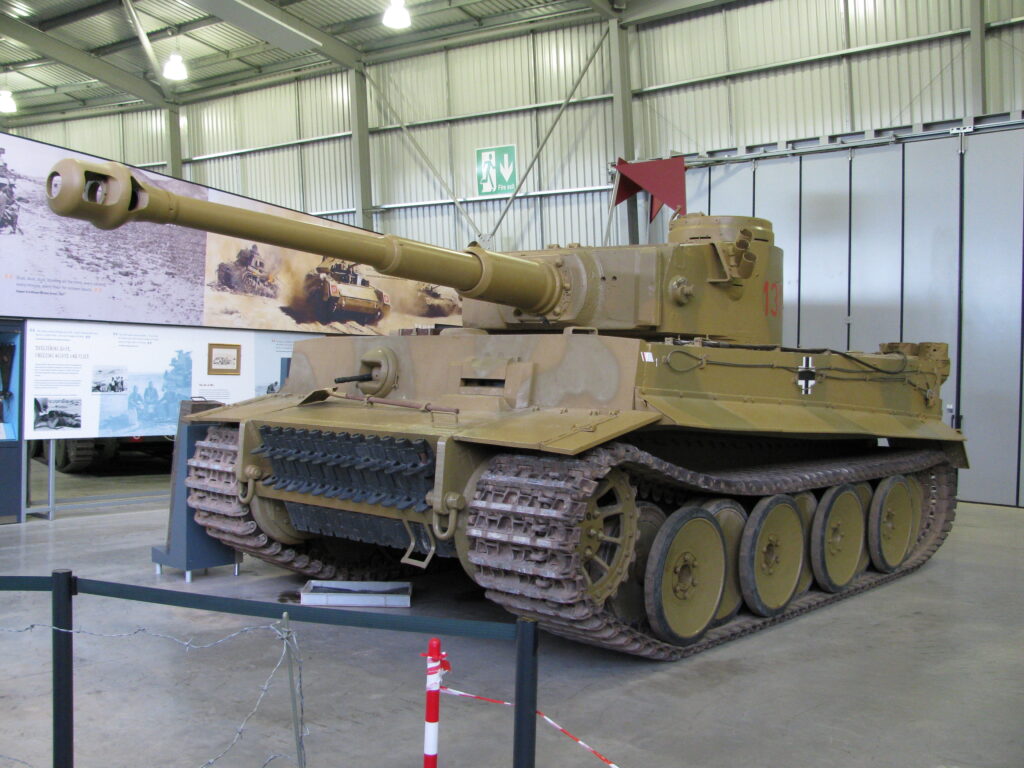
German Sd.Kfz. 181 Pz.Kfw. VI Tiger I

German Sd.Kfz 141/1 Pz.Kfw. III Ausf. L

German Sd.Kfz. 2 Klines Kettenkrad
To get to Bovington, I took a train from London to Wool (£51.40 each way). While The Tank Museum’s web site claims the museum is within walking distance, use the local taxi service from the train station. The distance to the museum seemed to be a lot farther than advertised, and, since I didn’t see any posted directions, the taxi ride was well worth the 80p cost.
The Tank Museum, an independent museum and registered charity (UK), is open daily 10:00AM – 5:00PM (8:00PM in August) except for Christmas Eve, Christmas Day, Boxing day, and New Year’s Day. Admission is £11. There is a restaurant, souvenir shop, and tank arena onsite.
If possible, visit on the last weekend in June when The Tank Museum’s annual “Tankfest” is held. Twice a week during the summer, some tanks and armored vehicles are shown in live action. Restored vehicles seen in the tank arena include a Stug III, Pz.Kfw. III, Kettenkrad, Sd.Kfz. 250 and 251half tracks, and the Tiger I as well as Allied Sherman, Stuart, and T-34/85 tanks and a M-20 armored car.
Musee des Blindes
Web: http://www.museedesblinds.fr
The Musee des Blindes, the world’s largest collection of armored fighting vehicles, is located in the city of Saumur in France’s Loire Valley. Saumur was the traditional training center of the French Cavalry, and the museum is a state institution run by the French army. The museum has been renamed after General Estienne, the father of the French armored forces.

German Sd.Kfz. 171 Pz.Kfw. V Panther Ausf A

French Saint Chamond

French Char B I
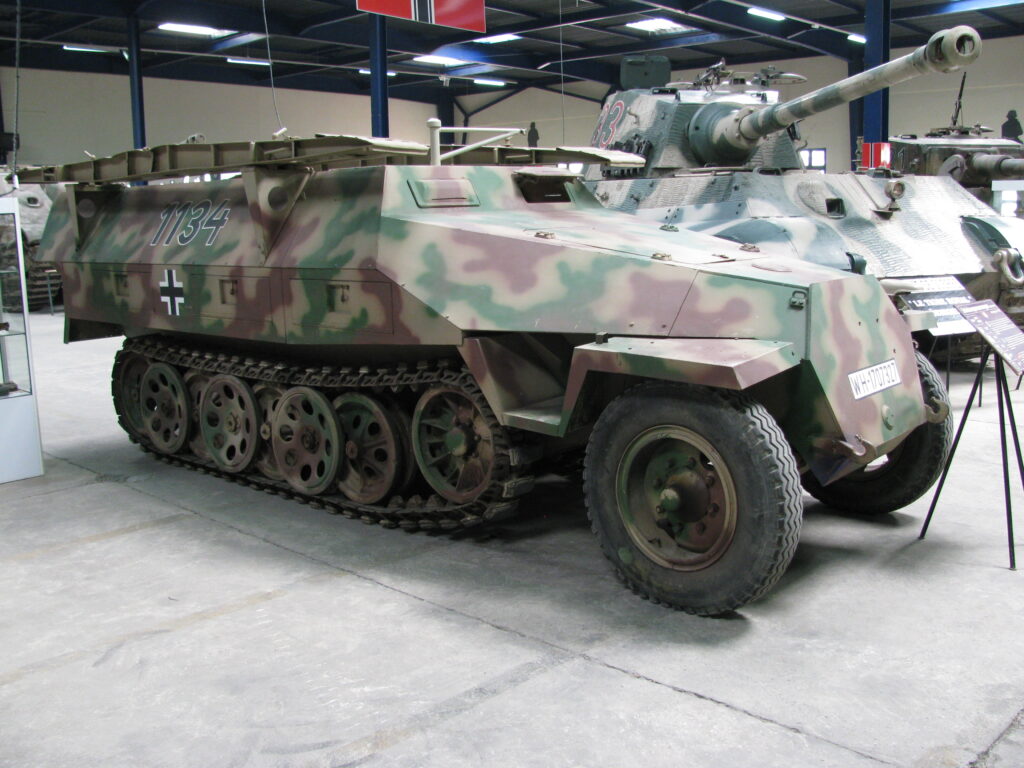
German Sd.Kfz. 251/7 Ausf. D
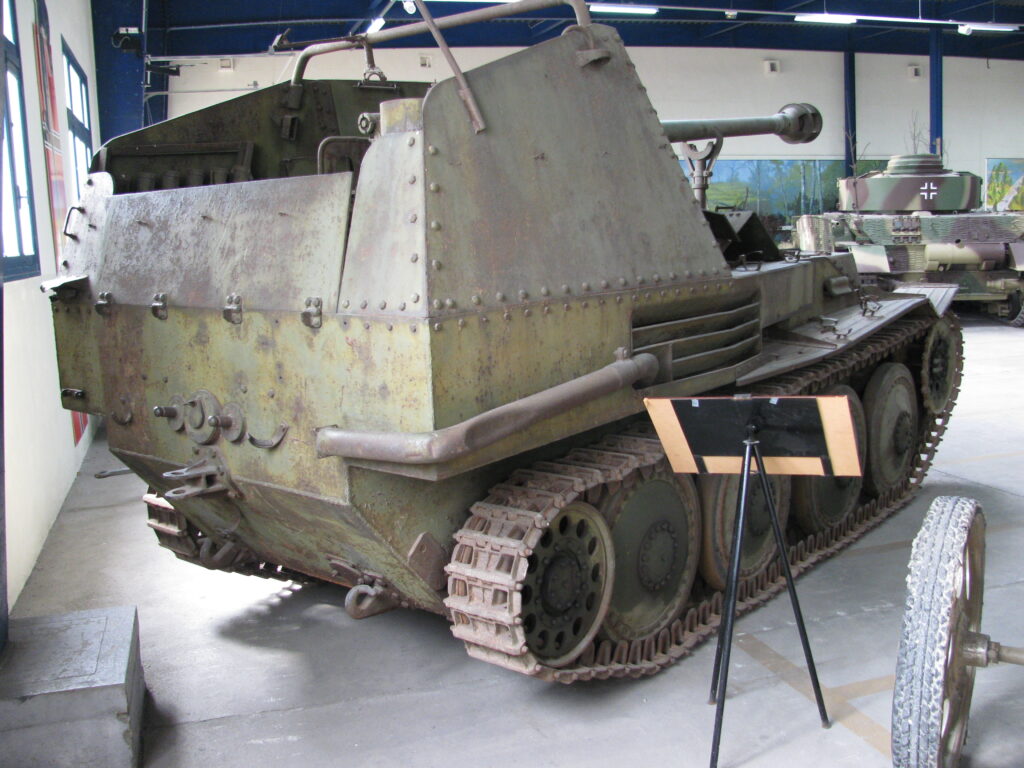
German Sd.Kfz. 138 Marder III M

German Sd.Kfz. 173 Jagdpanther

German Sd.Kfz. 179 Bergepanther

Italian M13/40
While the museum’s collection contains over 880 vehicles, due to space constraints, less than a quarter can be exhibited at one time. Although a number of vehicles can be found outside in the parking lot, most vehicles on display are housed inside a large exhibit hall. The museum has several rare tanks on display like the 1916 French Saint Chamond and German WW II Bergepanther. The vast storage rooms are only accessible to special guests.
Entry and exit is through a souvenir “boutique”. The museum’s exhibits are grouped into salons covering different time-periods or different countries. The salons include: 1914 – 1918, the 1940 French Campaign, Germany WW II, Italian WW II, Curiosities, Warsaw Pact, Allies WW II, France, Motors, Contemporary, and Cannons.
I picked up a rental car in Paris and drove the A10/A11 toll road to Le Mans – Angers – Saumur. The toll road was very expensive, and I recommend finding an alternate route. Once in Saumur, I followed a city map to get to the museum. If you don’t have a rental car, take a cab. The museum is located at 1043 route de Fontevraud, high atop the bluff that overlooks the Loire far from the city center.
Admission was €7. Pay the extra €5 fee that allows you to take pictures. You’ll be glad you did!
Try to time a visit when the museum holds its annual cavalry show, the”Carrousel”.
Military Vehicle Technology Foundation (MVTF)
Web: http://www.mvtf.org
The MVTF is one of the largest private military vehicle collections in the world. The collection began when Mr. Jacques Littlefield restored his first military vehicle in 1976. Over the years, his collection grew to over 250 items. In 1998, the MVTF was set up to manage and preserve his collection and serve the interests of authors, historians, educators, the defense industry, veterans groups, model makers, and the entertainment industry.
The MVTF’s goal is to acquire, restore, and interpret the historical significance of 20th and 21st century military vehicles. Domestic and foreign combat vehicles such as tanks, armored cars, self-propelled artillery, and other technically interesting mobile platforms are the focus of the collection. However, it also includes towed artillery, antitank and antiaircraft guns, military support equipment, inert ordnance, power systems, and training equipment.
The foundation’s restored vehicles are housed in four football field sized buildings located on 500 acres in the Portola Valley south of San Francisco. Many vehicles awaiting future restoration are parked outside.
All of the restored vehicles are in running condition except for two – a rare Pz.Kfw. I and a Pz.Kfw. IV. A visitor with a good memory will notice that a number of model decal sheets were patterned directly on vehicles in the MVTF collection.
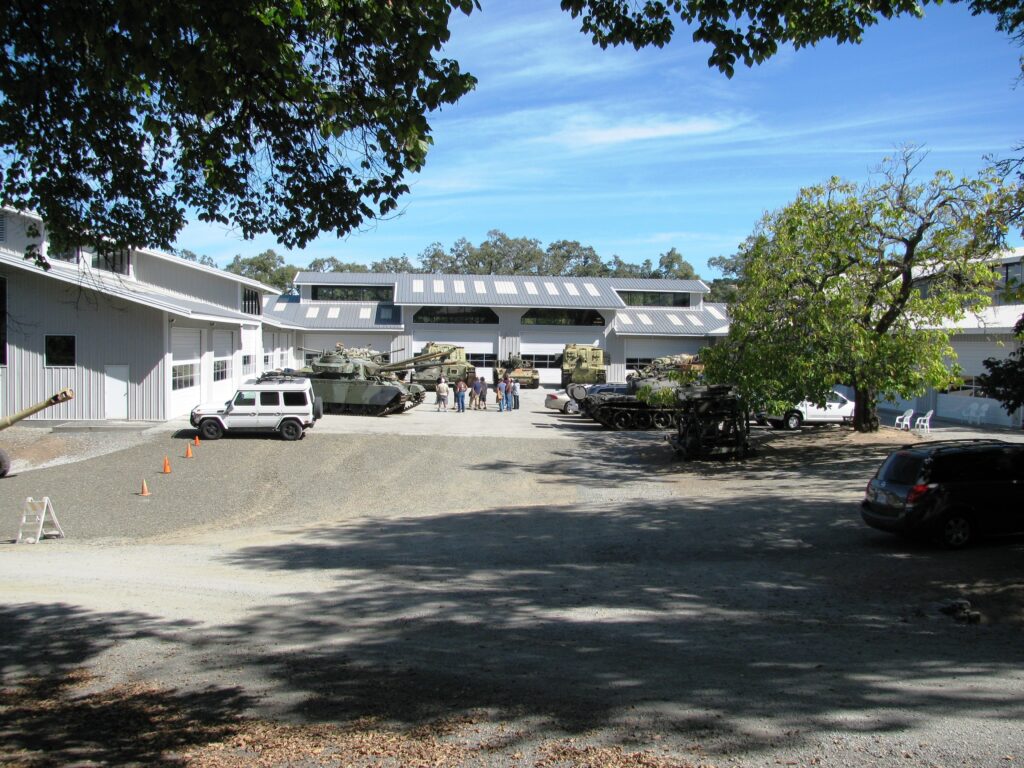
MVTF

British Mark IV Churchill Flail

U. S. M-18 Hellcat

U. S. M-26 Dragon Wagon

German Sd.Kfz. 101 Pz.Kfw. I
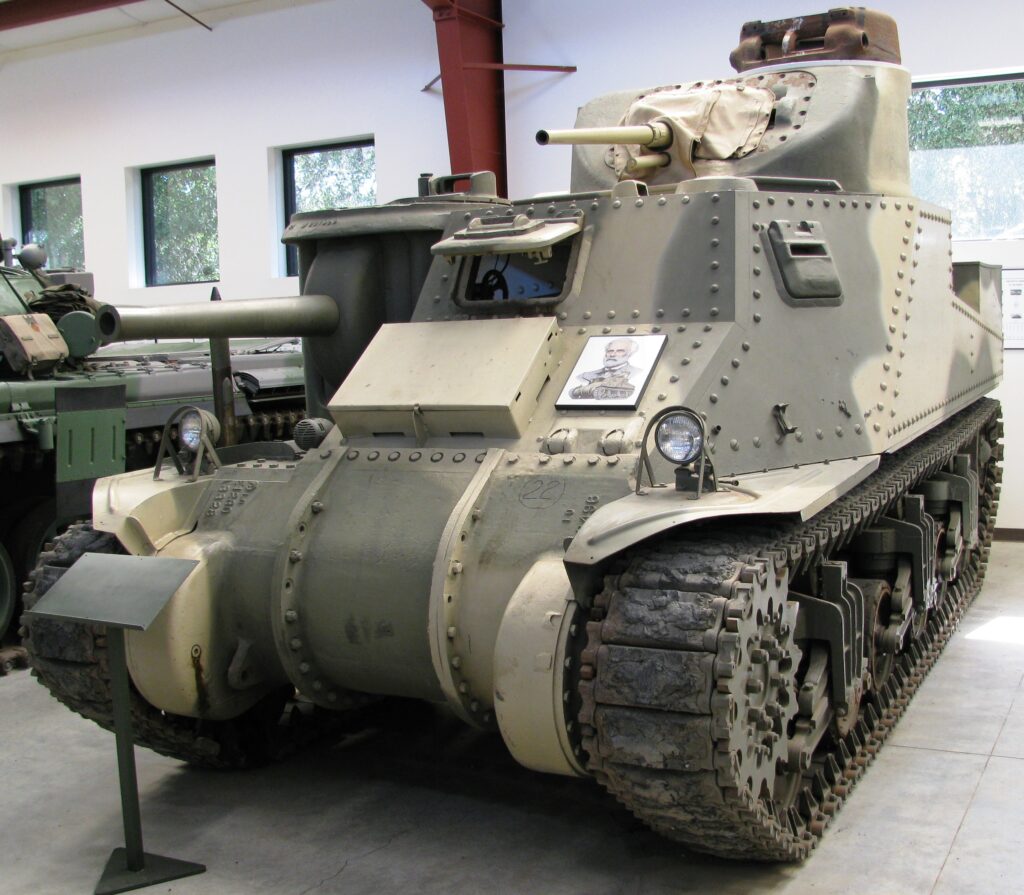
British M-3 General Lee

Russian T-34/85

German Sd.Kfz. 301 Borgward IV Ausf. B
On my business trip, I kept my rental car for an extra day. Having stayed just north of the San Francisco Airport, I took Interstate 280 south and exited the freeway at Alpine Rd.. From there, I followed directions downloaded from the MVTF web site to get to the museum. I strongly recommend you do the same. Despite being quite close to San Francisco, the area is rural.
Tours of the collection must be arranged in advance, are generally given on Saturdays at 10:00AM and 1:00PM, and take approximately 2 hours. As the MVTF is supported by visitor donations, a $20 tour donation per tour participant is customary.
Since Mr. Littlefield died in January 2009 without adequately funding the foundation, its future may be in jeopardy. I suggest you arrange a visit as soon as possible.
Conclusion
Having grown up on the East Coast, I visited the United States’ Ordnance Museum while housed at the Aberdeen Proving Grounds in Maryland a few times. Since the vehicles at Aberdeen were displayed in a large open field exposed to the elements, the collection is somewhat the worse for wear. Hopefully, the exhibits will be better cared for in their new home at Fort Lee in Virginia.
On my visits to these three museums, it was a treat for me to see most of the vehicles in a fully restored and running condition. I am glad they are well preserved and will be available for future generations to enjoy.
I can recommend visiting any or all of these museums without reservation. The only way I can imagine an enthusiast’s visit being more enjoyable to would be to see the vehicles in action during a ‘Tankfest’ or ‘Carrousel’!
Originally published in “Boresight”, the AMPS Membership Magazine, Volume 19, Issue No. 2, a Special Issue in which the issue’s content was exclusively submitted by SoCal AMPS members.
